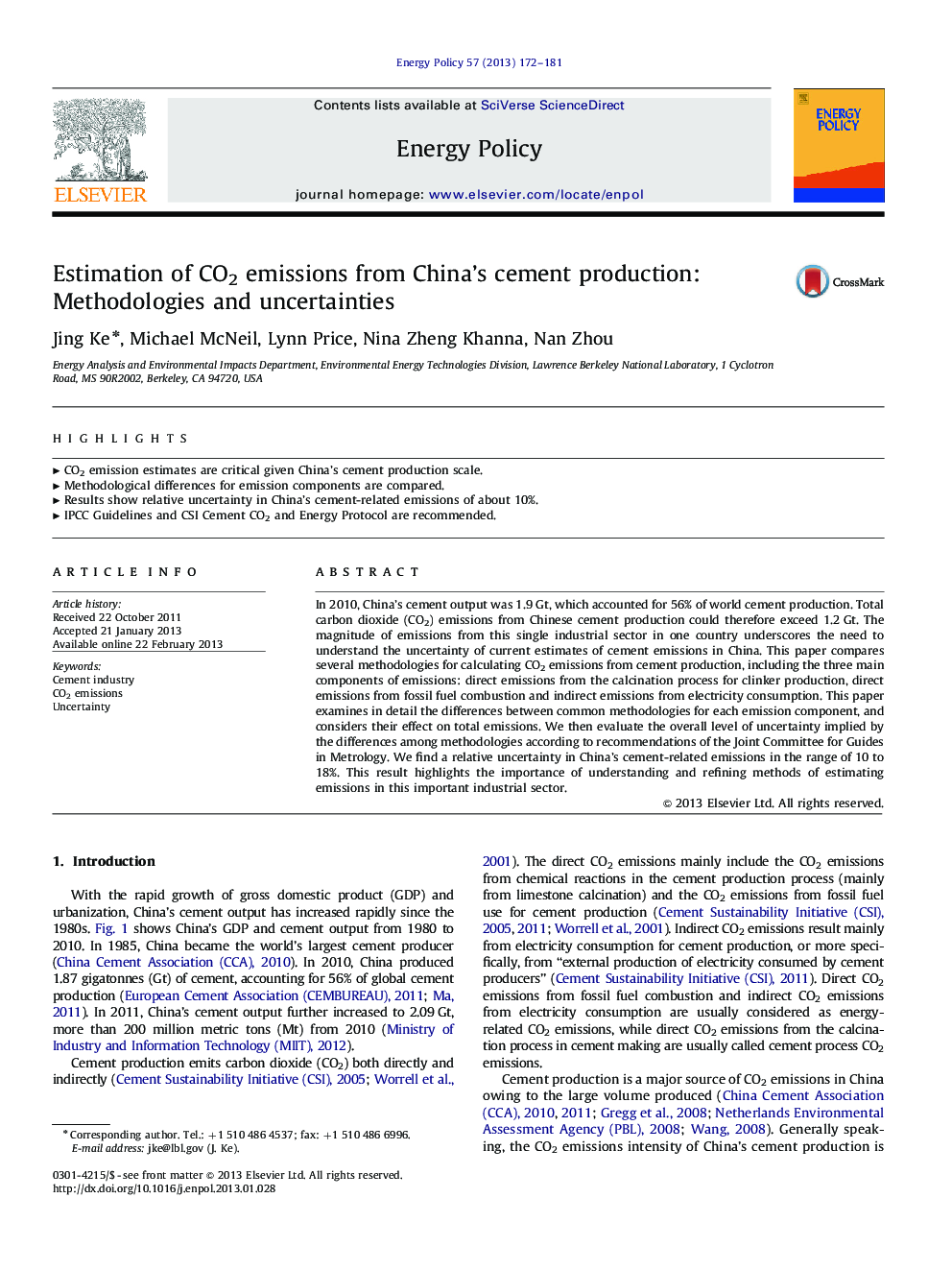| Article ID | Journal | Published Year | Pages | File Type |
|---|---|---|---|---|
| 992962 | Energy Policy | 2013 | 10 Pages |
In 2010, China’s cement output was 1.9 Gt, which accounted for 56% of world cement production. Total carbon dioxide (CO2) emissions from Chinese cement production could therefore exceed 1.2 Gt. The magnitude of emissions from this single industrial sector in one country underscores the need to understand the uncertainty of current estimates of cement emissions in China. This paper compares several methodologies for calculating CO2 emissions from cement production, including the three main components of emissions: direct emissions from the calcination process for clinker production, direct emissions from fossil fuel combustion and indirect emissions from electricity consumption. This paper examines in detail the differences between common methodologies for each emission component, and considers their effect on total emissions. We then evaluate the overall level of uncertainty implied by the differences among methodologies according to recommendations of the Joint Committee for Guides in Metrology. We find a relative uncertainty in China’s cement-related emissions in the range of 10 to 18%. This result highlights the importance of understanding and refining methods of estimating emissions in this important industrial sector.
► CO2 emission estimates are critical given China’s cement production scale. ► Methodological differences for emission components are compared. ► Results show relative uncertainty in China’s cement-related emissions of about 10%. ► IPCC Guidelines and CSI Cement CO2 and Energy Protocol are recommended.
